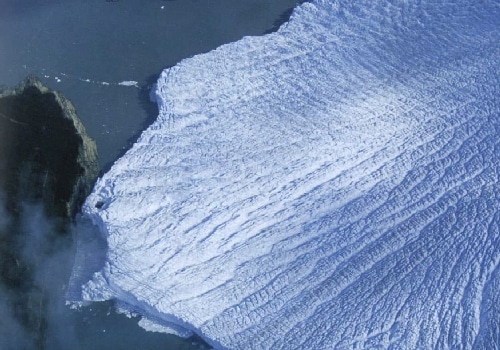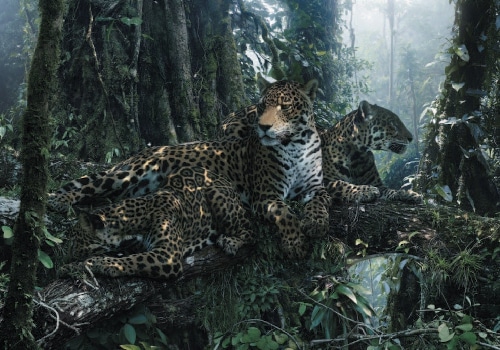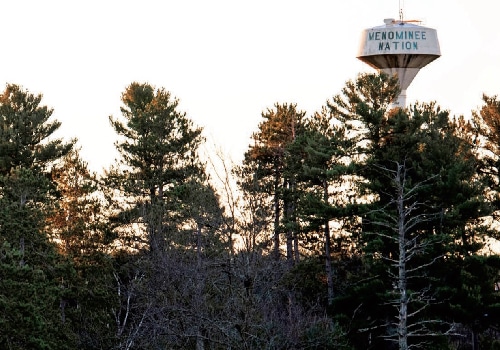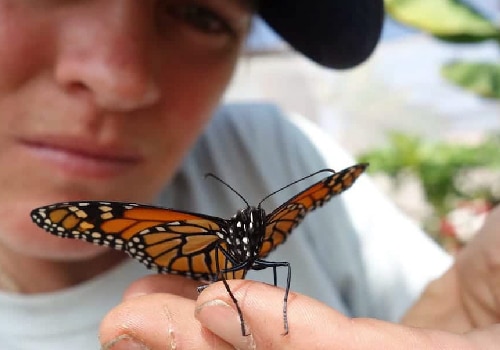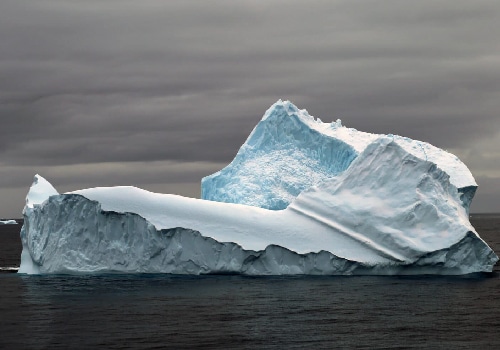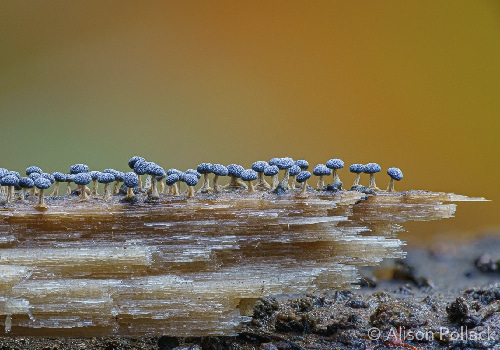IN THE WINTER 2021 ISSUE, we scrutinize the ways in which the body informs our perception of and engagement with our surroundings. What we understand of the natural world is intimately connected to how our bodies interact with and experience the world. For this issue, we turned the pages of Orion over to writers and artists with the lived experiences of being disabled.
The guest picture editor for Winter 2021 is Georgina Kleege, a professor of creative writing at the University of California, Berkeley. Her books include Blind Rage: Letters to Helen Keller and More Than Meets the Eye: What Blindness Brings to Art. We reached out to Georgina to ask about her experience of editing the issue as a blind person.
When Orion originally asked if you’d be willing to be the guest picture editor, your first thought was, You’ve got to be kidding. Tell us more about that response and your eventual decision to say yes.
At first, I just thought it was funny for obvious reasons. Why ask a blind person to perform such a visual task? I have written a lot about disabled artists, so I thought it might just be a matter of recommending some of them, which is something that happened. But Sumanth Prabhaker, Orion’s editor-in-chief, was interested in my opinion about more than just that; he wanted me to weigh in on the whole selection process, as well as on design and layout questions. I contend that blind people live in visual culture as much as anyone else. In fact, we may have an advantage because we are aware of things that sighted people take for granted and don’t think much about.
I thought it would be interesting—if challenging—to learn about the role images play in a magazine like Orion, about the specific interplay between images and words. And I enjoyed talking to Sumanth, so I agreed.
Can you take us through the process for selecting the visual work for this issue?
It was a very collaborative process. At first, I gave Sumanth the names of some disabled artists I know, or know about, and he did his own research. Some of these folks ended up submitting work for the issue. After that, I read drafts of all the texts as they came in. As I was reading, I asked myself if there was something that a sighted person would like to see to understand the text—a literal illustration.
Elsewhere, I sensed that what was needed was something less literal and more evocative, something representing a mood or other emotional quality in the writing. All along the way Sumanth and I had back-and-forth conversations. Sometimes he agreed with my instincts, sometimes he didn’t, and vice versa.
I also sat in on a couple of design meetings (on Zoom) where the editorial team talked through the issue, page by page. I found this fascinating. They talked about everything from the specific placement of images, to the font color and size, to the layout of text on the page, to background colors, and so forth. It felt as if my job was simply to ask questions, to ask, Why? What difference does it make if you put the image there versus over there? Sometimes, the answer was that it’s the way they’d always done things. Sometimes, the questions made them stop and think, Why do we do that? I learned a lot. I think they learned a lot too.
What was one interesting anecdote during the process of selecting art for this issue?
In our earliest conversation, I suggested including art by Pete Eckert who belongs to a collective of blind photographers in California (there is, or used to be, a similar collective in New York City). I thought of him, in particular, because his work is interested in scenes of nature—redwood forests and the like. He uses very long exposures to create images of himself with complex double and triple exposures, or afterimages, that look—I’m told—like auras or some other supernatural phenomenon.
Sumanth liked the images, but at first, we didn’t know where to put them. Then Sarah Capdeville’s story “The Long View” came in, and the images really seemed to fit. They have an eerie, mysterious quality that seemed to work with the story.

For anyone who’s curious about blind photography, it is a medium that is attractive to many blind and visually impaired artists worldwide. In many cases, these are photographers who used to be sighted, and so they already know how cameras work and can adapt their artistic practice to blindness. I don’t remember Pete’s exact story, but I know that, like others, he spends a lot of time planning and setting up shots, employing careful measurements to place the camera and himself (or whomever he’s photographing) and timing the exposures.
Another decision I was happy about was the choice to illustrate Amy Irvine’s article about her daughter’s seizure dog with some images of cave paintings featuring dogs. When I was reading the article and she was explaining the long history of human–canine coexistence and coevolution, the idea of cave paintings just popped into my head. I’m very interested in cave paintings in part because I gather there is no consensus about how they came to be. Were they merely decorative? Did they have some religious significance? Were they a record of events? Did they tell stories? For me, it’s really interesting to think about how it occurred to anyone to make a two-dimensional projection of three-dimensional objects and creatures. Also, they were produced in very low light, and the artists may have been guided more by touch than by sight. But simply on the level of an illustration of the article, they do provide ocular proof for what Irvine says about the long collaboration between canines and humans.

What was it like as a cocurator of a museum’s “touch tour” for the blind? What does that include?
My one experience as a cocurator of an exhibit of tactile art was at the Mosesian Center for the Art in Watertown, Massachusetts, in the summer of 2019. The sighted curators were aware of work I’d done at San Francisco Bay Area museums, a role I call a touch docent. Because I’ve enjoyed the privilege of touching art that museums around the world offer to blind people, I felt like I should return the favor and describe the experience to people who don’t have the opportunity.
The show at the Mosesian was a juried exhibition. Artists submitted images of their work, but they were also required to include a detailed verbal description with specific references to the tactile and haptic qualities. When the description made it sound like something I’d like to get my hands on, I gave it a high score. Then the sighted curators and I had some back-and-forth. In some instances, as in all such exhibits, decisions were shaped by the dimensions of the exhibit space.
I was adamant that this was not to be an exhibit for the blind. Rather, it was an exhibit that did not exclude blind people. Exhibits of tactile art and tactile representations of art have been around since at least the nineteenth century and almost always, in my experience, have a patronizing quality, and a rather reductive understanding of tactile aesthetics. We wanted an exhibit where everyone was welcome to touch. In fact, the name of the exhibit was Please Touch the Art. About fifty pieces in the show included sculpture of various kinds, textile art, mosaic, and mixed media. Several artists were blind or visually impaired. We used the artists’ own descriptions as wall labels because these often gave some sort of instructions about the best way to experience the piece. One of the most gratifying things for me was the opening reception where, unlike a typical art opening, people were incredibly engaged, interacting with each other and the art.

Artwork featured in the Winter 2021 issue by Katherine Sherwood. Left: red robe, 98 x 62 inches, mixed media on found cotton, 2020. Middle: companion piece (after msm), 57 x 50 inches, mixed media on found cotton, 2020. Right: neuron nurse, 92 x 48 inches, latex paint, digital prints, and fabric, 2010.
You mentioned in the Winter 2021 issue that a growing field of AI is helping to meet accessibility standards (alt tag prediction and generation, for example). Have you found AI accessibility technology to aid or hinder the visually impaired community?
AI for alt text is really in its infancy and is therefore pretty crude. For instance, these systems are really pretty bad at such tasks as facial recognition. For the most part, when I encounter alt text generated by AI, I find it pretty funny. As I say in the article, the convention now is for it to say, “Appears to be . . . ,” which immediately makes me think that it must be something else. Depending on the context, I think the most honest alt text should simply say, “There’s an image here that’s really for sighted people and does not provide any additional information beyond what you’ve just read. So feel free to move on.”
How do you experience landscapes?
I’m often struck by how often sighted people seem to experience landscapes as if viewing a landscape painting or photograph. Think about the designated lookout points in national parks, or the turnouts on scenic highways. Someone has determined the optimal viewing position, and people stop and look, and probably take a picture, then move on.
For me, landscape is something I experience three-dimensionally, kinesthetically, by moving through it. I train my awareness all around me, 360 degrees. I’m listening and feeling, even smelling, what’s occurring on every side, behind me, underfoot, and overhead. The experience is about change: the changing terrain, sounds coming and going, the effects of air movements. Sometimes it seems that sighted people are so focused (pun intended) on vision alone, and the particular vision required to spot what’s straight ahead. Does it turn everything into a static two-dimensional image?
I was particularly struck by your description of the precision of language necessary to describe an image you are looking for. Do you find today’s visually obsessed culture to come at the expense of knowing language? Do you think that the more sighted people rely on visual media, the more they lose intimacy and nuance with language?
It used to be that when people asked me for instructions on describing images to blind people, I would say, “Pretend you’re doing it on the phone.” I was trying to communicate that talking to a blind person is not unlike talking to a sighted person; there’s no need to come up with a totally new vocabulary. Of course, now it seems that people rarely talk on the phone, or if they do and they want to describe something they’ve just seen, they are more likely to take a picture and send it to the person.
We have more and more visual technologies and perhaps that means we’re becoming less and less verbal. I don’t know. It has been my experience that people who are involved in the visual arts, art history, and visual culture are still intensely verbal. They use language to draw attention to features of an image that another viewer might have missed at first glance. Show a bunch of people an image and ask them to say something about it, and it’s likely that they will each point out different things. And by “point,” I mean both with their fingers, and also with their words.
When the first person does this, the others will notice something they might have disregarded before. For a blind person listening to this, or participating in the conversation by asking questions as it goes along, there can be a slow accretion of understanding about what an image says to people. It’s almost always the case that different people see different things, which refutes any notion that images are a universal language.
Subscribe to Orion by January 31, 2022, to start your subscription with this issue.


















